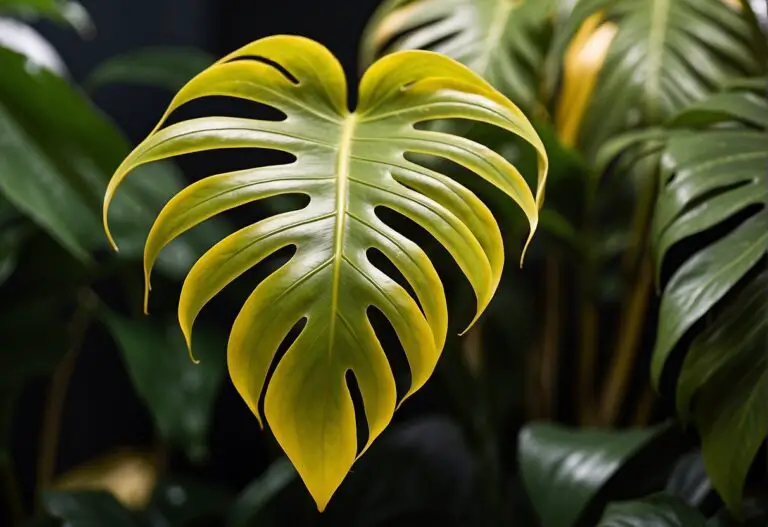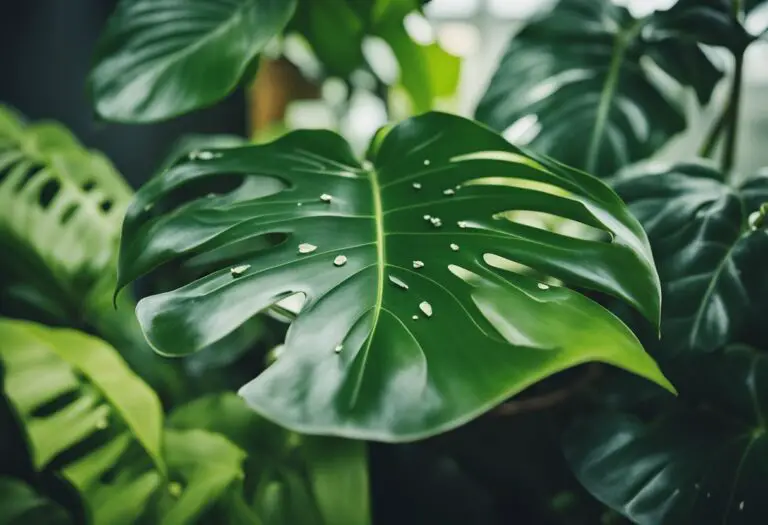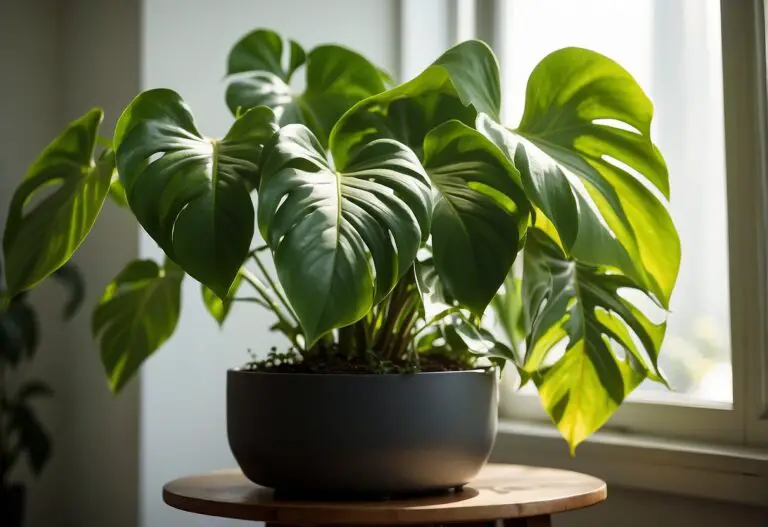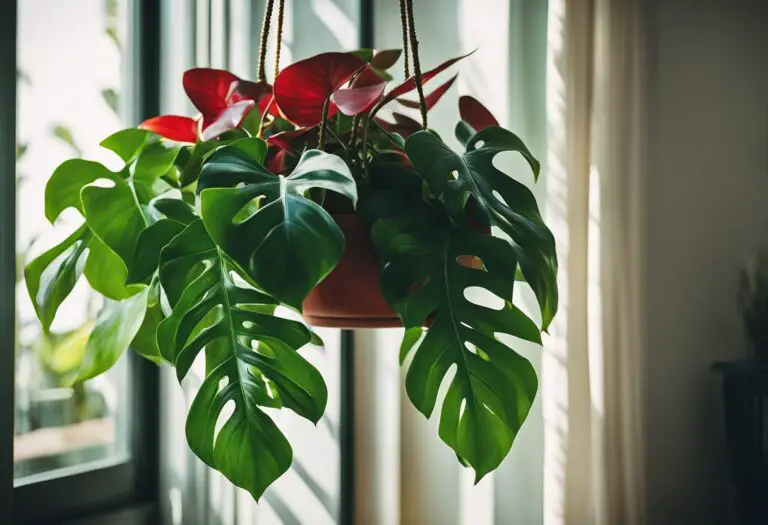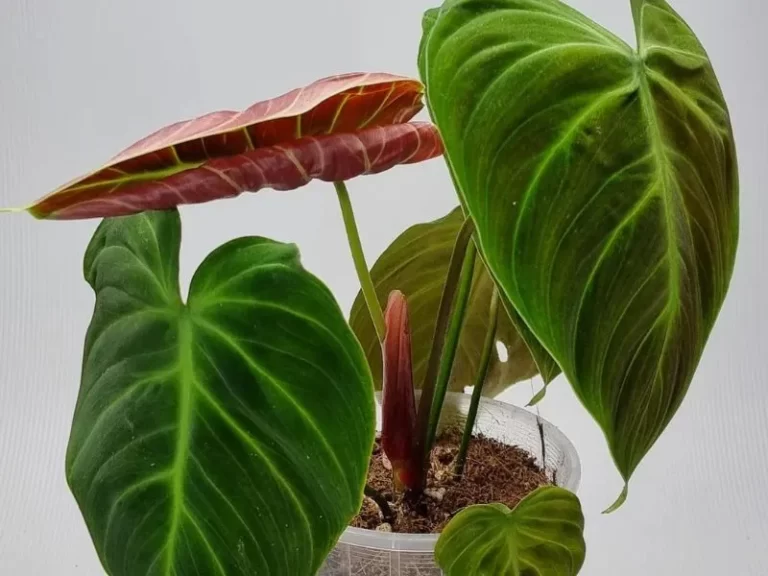Philodendron Spiritus Sancti: A Rare and Exotic Houseplant
Philodendron spiritus sancti is a rare and exotic plant that has recently gained popularity among plant enthusiasts. This plant is part of the Araceae family and is also known as Philodendron Santa Leopoldina and Philodendron Sanctum.
It is considered a year-round plant and is best grown near windows or doors that face east. Its sword-like foliage is distinctive, making it a unique and rare addition to any plant collection.

Philodendron spiritus sancti is native to Brazil and is found only in one geographic region around 800 meters above sea level, north of Rio de Janeiro. Currently, the last remaining wild Spiritus Sancti are kept in conservation on a private estate, so it’s unknown exactly how few are left.
Due to its rarity, Philodendron spiritus sancti is highly sought after and can be difficult to find. However, with proper care and maintenance, this plant can thrive in your home and become a beautiful addition to your collection.
Key Takeaways
- Philodendron spiritus sancti is a rare and exotic plant that is part of the Araceae family.
- It is native to Brazil and is found only in one geographic region around 800 meters above sea level, north of Rio de Janeiro.
- With proper care and maintenance, this plant can thrive in your home and become a beautiful addition to your collection.
Taxonomy and Classification

Genus Philodendron
Philodendron Spiritus Sancti belongs to the Philodendron genus, which is a large genus of flowering plants in the family Araceae. The genus Philodendron is the second-largest member of the family Araceae, after the genus Anthurium.
The genus Philodendron has hundreds of species, and many of them are epiphytic, meaning that they climb up other plants (like trees) as they grow.
Species Distinction
Philodendron Spiritus Sancti is a rare Philodendron native to a small region in Brazil, called Espirito Santo. This unique plant is also called “the holy grail of Philodendrons,” coveted for its elongated, sword-like leaves that can reach up to 2 feet long.
Philodendron Spiritus Sancti is distinct from other species of Philodendron due to its unique morphology and leaf variation.
Origin and Habitat
Native Region
Philodendron Spiritus Sancti is a rare plant species that is native to a small region of Brazil called Espirito Santo. This unique plant is also known as Santa Leopoldina and is considered to be the “holy grail of philodendrons”. The plant is highly coveted for its elongated, sword-like leaves that can reach up to 2 feet long.
Growth Conditions
Philodendron Spiritus Sancti is a tropical plant that is used to warm and humid conditions. It requires high humidity to thrive, and it cannot tolerate cold. The plant cannot survive frost without protection. The plant is a fast climber but a slow grower, and it has unique black-marked leaves.
In its natural habitat, Philodendron Spiritus Sancti is currently listed as endangered, with fewer than 20 plants left in the wild. The plant is threatened by habitat loss due to deforestation and human encroachment. To grow the plant indoors, you will need to mimic its natural habitat by providing it with high humidity and warm temperatures.
Morphology
Leaf Structure
Philodendron Spiritus Sancti is known for its elongated, sword-like leaves that can reach up to 2 feet long. The leaves have a glossy texture and a dark green color, with prominent veins running through them.
The leaves have a unique shape, with a pointed tip and a slightly curved edge. The plant has a tendency to grow aerial roots that can be used to anchor the plant onto a support.
Growth Pattern
Philodendron Spiritus Sancti is a climbing plant that can grow up to 20 feet tall. The plant has a tendency to grow in a vertical direction, with new leaves emerging from the top of the plant.
The plant can be trained to grow in a specific direction by providing it with a support structure, such as a trellis or a stake. The plant has a moderate growth rate and can be propagated by stem cuttings.
Overall, Philodendron Spiritus Sancti is a unique and beautiful plant that can add a touch of elegance to any indoor space. With its glossy leaves and climbing growth pattern, it is sure to be a conversation starter.
Cultivation
Propagation
Philodendron Spiritus Sancti can be propagated through stem cuttings. Take a stem cutting that is at least 6 inches long and has a few leaves. Remove the lower leaves from the cutting and dip the cut end in rooting hormone.
Plant the cutting in a pot with well-draining soil and keep it moist. After a few weeks, roots will begin to develop, and new growth will emerge from the top.
Soil Composition
Philodendron Spiritus Sancti grows best in well-draining soil that is rich in organic matter. A mixture of peat moss, perlite, and vermiculite is a good choice. The soil should be kept moist but not waterlogged.
Overwatering can lead to root rot, so it’s important to let the soil dry out slightly between waterings.
Watering Needs
Philodendron Spiritus Sancti prefers to be kept moist but not waterlogged. Water the plant when the top inch of soil is dry to the touch. During the growing season, the plant may need to be watered more frequently. In the winter, reduce watering to prevent overwatering and root rot.
Remember to repot your Philodendron Spiritus Sancti once a year to ensure it has enough space to grow. When repotting, choose a pot that is one size larger than the current pot and use fresh, well-draining soil.
Overall, Philodendron Spiritus Sancti is a relatively easy plant to care for, making it a great choice for beginner and experienced gardeners alike.
Care and Maintenance
Light Requirements
One of the most important things to consider when caring for your Philodendron Spiritus Sancti is light. This plant prefers bright, indirect lighting.
An ideal location is near (but not in) a bright window. Keep in mind that direct sunlight can harm the plant, so it is best to avoid placing it in direct sunlight.
Temperature and Humidity
Philodendron Spiritus Sancti prefers a warm room with less than 80 percent humidity. Keep the temperature between 66 – 76°F (19-24°C) [1].
You can maintain the ideal humidity level by using a humidifier or by placing a tray of water near the plant. This will help to keep the air around the plant moist, which is essential for its growth.
Fertilization
Philodendron Spiritus Sancti needs very little fertilizer now and then [2]. You can use a diluted liquid fertilizer while growing the plant. It is best to fertilize the plant during the growing season, which is usually from spring to summer. Over-fertilizing the plant can lead to damage, so be careful not to overdo it.
Remember to keep an eye on your plant and adjust your care routine as needed. With proper care and maintenance, your Philodendron Spiritus Sancti will thrive and add beauty to your home.
Cultural Significance
Philodendron Spiritus Sancti holds significant cultural value, especially among plant collectors and enthusiasts. The plant’s unique appearance, scarcity, and historical significance make it highly sought after.
Collectors’ Interest
Philodendron Spiritus Sancti is a rare plant that is highly coveted by collectors. The plant’s elongated, sword-like leaves that can reach up to 2 feet long make it visually appealing.
Due to its rarity, collectors are willing to pay a premium price for it. The plant’s popularity has led to an increase in demand, making it even harder to find.
Economic Value
Philodendron Spiritus Sancti has significant economic value due to its scarcity. The plant’s limited supply and high demand have resulted in an increase in its price. In recent years, the plant has become an important commodity in the plant trade industry. The plant’s economic value has also led to habitat destruction, as collectors and traders seek to obtain it.
Frequently Asked Questions
How can I propagate Philodendron Spiritus Sancti effectively?
Propagating Philodendron Spiritus Sancti can be challenging due to its rarity and high cost. However, it can be propagated through stem cuttings. Take a stem cutting with at least two leaves and a node.
Dip the cutting in rooting hormone and plant it in well-draining soil. Keep the soil moist and the cutting in a warm, humid environment until it roots.
What is the typical size of a mature Philodendron Spiritus Sancti?
Philodendron Spiritus Sancti can grow up to 3-4 feet tall and 2-3 feet wide. Its long, narrow green leaves can reach up to 3 feet in length.
Is tissue culture a viable method for propagating Philodendron Spiritus Sancti?
Yes, tissue culture is a viable method for propagating Philodendron Spiritus Sancti. However, it requires specialized equipment and expertise, making it a more expensive option.
Are seeds available for growing Philodendron Spiritus Sancti, and how reliable are they?
Seeds for Philodendron Spiritus Sancti are rare and difficult to obtain. Additionally, they are not a reliable method of propagation as the resulting plant may not be true to the parent plant.
What are the key differences between Philodendron Spiritus Sancti and Philodendron billietiae?
Philodendron Spiritus Sancti and Philodendron billietiae are both rare and highly sought-after plants. However, they have distinct differences. Philodendron Spiritus Sancti has long, narrow green leaves, while Philodendron billietiae has large, heart-shaped leaves with prominent veins.
What factors contribute to the rarity and high cost of Philodendron Spiritus Sancti?
Philodendron Spiritus Sancti is a rare plant due to its limited natural habitat in Brazil and its slow growth rate. Additionally, its popularity among collectors and the high demand for its unique appearance contribute to its high cost.


